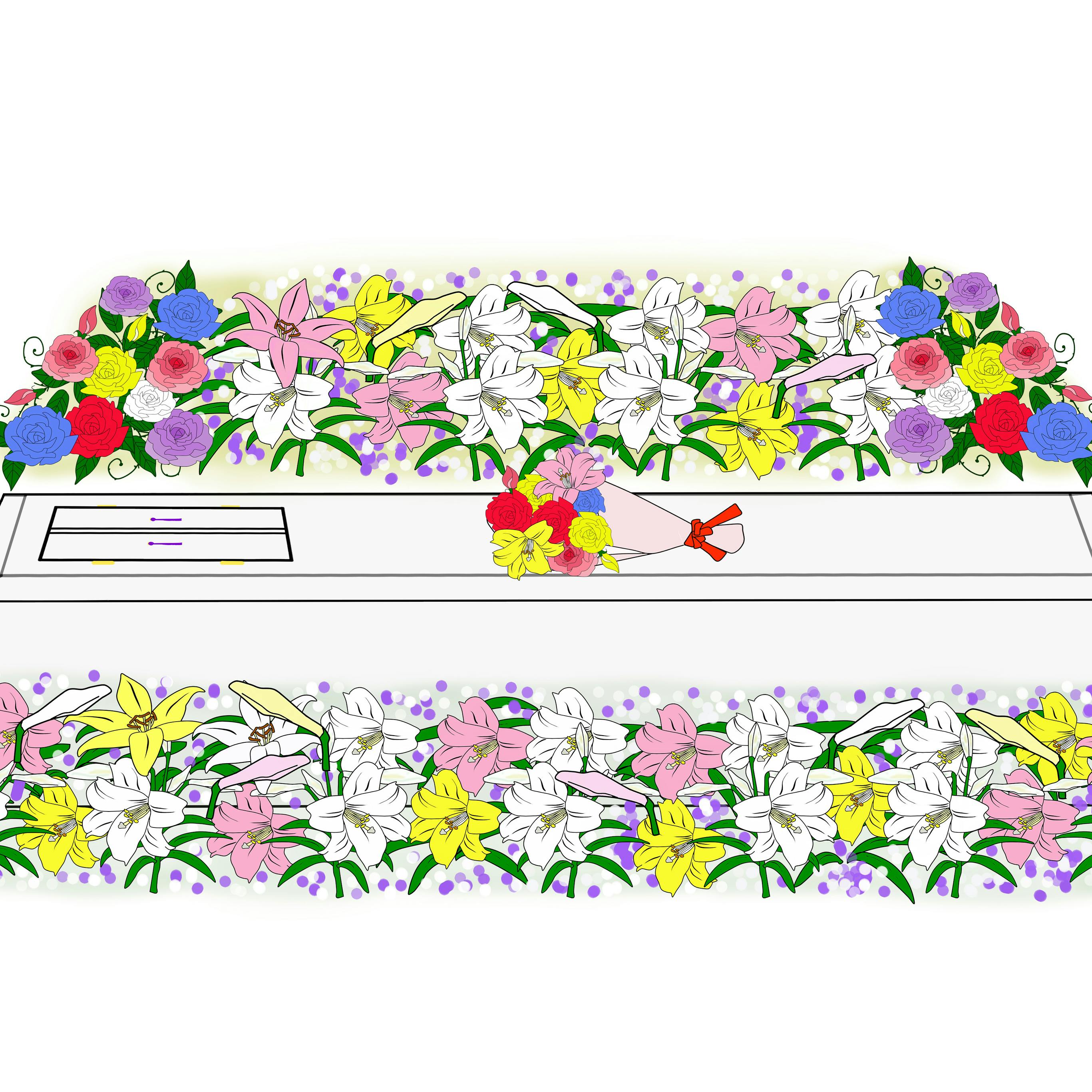
Coffin vs Casket: The Difference in Shape, Design, and Cost
Which is better for your loved one?

When the time comes to plan a funeral service for a loved one, you will have many choices to make. There are many ways to honor and commemorate your friend or family member, from a traditional funeral to a wake to a memorial service. If you are planning to bury your loved one, rather than taking the path of cremation or other alternative memorialization methods, then one of the decisions likely to arise is whether to use a coffin or a casket and what kind.
There are many similarities between the two, but important distinctions, as well. You will want to work alongside the funeral services team to determine the right option to properly honor your loved one.
History of Coffin and Casket Burials
The phrases “coffin” and “casket” have become largely interchangeable in recent years, but they each have a unique history that speaks to individual memorials and how those in the past have honored their loved ones.
While the tradition of burying one’s loved ones dates back to the ancient Egyptian and Mesopotamian cultures, the distinction was reserved for the wealthy and powerful until the 1700s. This movement toward a coffin burial coincided with the arrival of settlers to the United States. New laws in Europe allowed those not of noble or powerful birth to be afforded a coffin burial, and those traditions came to the Americas with European settlers.
While searching for a coffin and a casket will provide similar if not identical results, the words have different origins that have evolved and changed over time. The word coffin is French in origin, and the official definition is varied. Cofin, as it is spelled in French, refers to a small basket. Over time, this has come to be associated with burials.
Casket, also French in origin, was a word associated with luxury and grandeur. It referred to an ornamented box used to hold objects of personal or monetary value, such as jewels or letters. As the social consciousness surrounding death and loss evolved and changed, the more euphemistic terminology took hold, and the word casket became the commonly used phrase.
Many other factors influenced the shape, approach, and use of coffins and caskets. In Europe, the Victorians' interest and culture surrounding death and mourning played an important role in how loved ones were honored and remembered. In the United States, the Civil War and the burgeoning funeral industry both impacted the memorial service process and influenced how we practice burials today.
It is not only in their history that coffins and caskets differ, but in their shape, design, and cost, as well. If you are making arrangements for a memorial service, these distinctions might help guide you to the appropriate burial method to honor your loved one.
Coffin and Casket Shape
The coffin and casket shapes are one of the most defining distinctions, now and throughout history. They speak not only to the evolution of aesthetics and access to resources but also to the collective social feelings about death and how mourning was to be approached throughout history.
The coffin traditionally has six sides and tapers slightly at the bottom, though there is nothing in the word’s original definition to imply that this is required. By contrast, the casket is four-sided and evenly shaped.
Theories abound as to why there was a movement away from the coffin design and toward the more adorned and more euphemistic casket. Many believed that the ubiquity of death during the Civil War in the United States required the mass production of coffins, and boxes were easier to craft than hexagonal coffins.
There is also the idea that local furniture makers quickly took on the role of creating burial boxes and made simpler boxes on an as-needed basis.
The social consciousness surrounding loss was shifting as well. For many, the coffin shape was too representative of loss, and a movement began that became later known as the “beautification of death.” Sentiments regarding how a loved one was to be honored changed, and with it, the shape of the burial box, its name, and its design.
The movement away from the hexagonal shape was a way to put distance between loss and life, and the more commonly accepted phrase “casket” took hold. It meant that the burial box contained something valuable and special that was to be honored.
Coffin and Casket Design
In addition to evolving in shape, the design of caskets and coffins also indicated an evolving feeling surrounding loss. Coffins were traditionally more austere, as were caskets when they first entered common use.
But as it became more common to “beautify” death and more practices regarding modern mourning came into use, caskets began to change. They could be lined with softer materials, many of which had become less expensive and easier to acquire as American industry grew. Fabrics no longer needed to be imported, which meant a lined or softer casket was more accessible to the average person.
Individual casket design has allowed for creativity when honoring loved ones who have passed, and there is a unique and beautiful history of casket design, including caskets inlaid with money, caskets in color, and those featuring photos and art of or in honor of the deceased. If you are looking for a unique way to celebrate a loved one within the guides of a traditional funeral ceremony, then a custom casket style is an option.
Coffin and Casket Cost
If you are looking to hold a funeral on a budget, you might want to explore alternative options to the traditional casket—or coffin—burial. Memorial services can become very costly very quickly, and one of the most expensive elements of a traditional service is the casket.
A casket, on average, will cost between $2,000-$5,000, and if you’re interested in making custom changes or adding individual designs, it can become even more expensive quickly. If a casket feels like the most appropriate way to honor your family or friend, speak with the funeral services team and try to find an inexpensive option that you believe best fits your needs.
There are also online casket services available, so you may want to explore other casket providers to find the right option for you. You do not need to purchase a casket directly from a funeral home.
Coffins, though far less commonly used in the United States, are less expensive than caskets, traditionally. Because they continue to employ the more austere elements of burials from the past, they can be a less costly option than a modern casket. The names are often interchangeable, however, so pay close attention when researching to ensure you’re finding the right option for your needs.
How to Pick the Right Casket
You have many options when it comes to deciding on the appropriate casket for your loved one. Here are some things you’ll want to consider along the way.
What is Your Budget? Caskets can run the gamut in price, so you’ll want to know what resources are available to you before you begin the process.
Do Your Research: The funeral service may have many options, but they’re not your only choice. Do some research in advance to find the different types of caskets available and the expected costs, so you’re prepared before you have to make a big decision.
Give Yourself Time: Don’t feel obligated to pick the perfect casket right away. This is an opportunity to honor and celebrate your loved one. Take the time you need to feel comfortable with your choice.
Keep Your Loved One in Mind: Ultimately, you want to pick a casket, coffin, or alternative disposition method that represents the person you love and honors who they were. That might be a more subdued or minimalist design or a casket in a bold and exciting color. When deciding on the appropriate coffin, put their personality at the fore and celebrate them as you see fit.
In Conclusion
The way we honor and celebrate the lives of those who have passed has changed over time. From the long-ago kings of ancient civilizations to modern wars that shifted our consciousness surrounding loss, we have worked to find ways to mourn, reflect, and be at peace with the passing of loved ones.
For many, that peace comes through the burial and closure process, in finding the casket or coffin that best represents the life of the person they love and allows them to rest in a beautiful, individual way. Though a great deal has changed over the history of the coffin and the casket, the most important thing remains the same. Through art and ceremony, we work to find love, joy, and peace in the final act of farewell, whatever form that may take.
